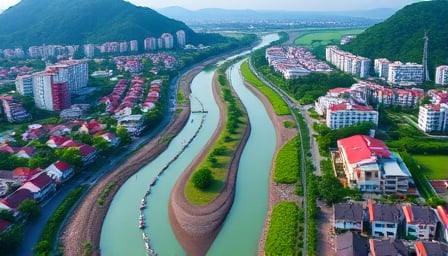Gas Malaysia Berhad: Navigating Challenges and Seizing Opportunities
In the dynamic landscape of Malaysia’s energy sector, Gas Malaysia Berhad (KL:GASMSIA) continues to play a pivotal role in meeting the nation’s growing energy demands. As a key player in the production and distribution of natural gas, the company is not only focused on maintaining a sustainable and reliable energy source but is also actively exploring innovative solutions to enhance its operations and environmental footprint.
Biomethane Plant: A Step Towards Sustainability
A significant development for Gas Malaysia is the launch of its centralised biomethane injection station in Kluang, Johor. According to the company’s president and group CEO, Ahmad Hashimi Abdul Manap, the facility is expected to be fully operational in the second half of 2025. The biomethane plant represents a strategic move towards sustainability, with the potential to break even within seven to nine years. Ahmad Hashimi highlighted the possibility of achieving payback sooner than anticipated, contingent on increased supply volumes from palm oil millers. This initiative not only underscores Gas Malaysia’s commitment to renewable energy but also positions the company as a leader in green gas production technology.
Challenges in Gas Supply Amidst External Disruptions
Despite these advancements, Gas Malaysia faces challenges in maintaining its gas supply, particularly following the disruption caused by the Putra Heights fire. The incident led to a temporary halt in domestic transmission, prompting the company to seek alternative supply sources from Thailand. However, Ahmad Hashimi noted that not all affected customers could be fully serviced due to quality and pressure constraints associated with the alternative supply. While the majority of clients have seen their operations stabilize, a handful remain impacted, highlighting the complexities of managing supply chain disruptions in the energy sector.
The Potential of Palm Oil Waste
In a broader context, Malaysia’s palm oil industry presents a significant opportunity for renewable energy generation. Minister of Plantation and Commodities, Datuk Seri Johari Abdul Ghani, recently emphasized the potential of palm oil mill effluent (POME) to generate up to 1,000 megawatts (MW) of renewable energy. With 450 mills nationwide, the waste material from these mills could be harnessed to produce substantial energy, contributing to the country’s transition towards a low-carbon economy. This development aligns with Gas Malaysia’s efforts in renewable energy and offers a promising avenue for collaboration between the energy and palm oil sectors.
Regional Cooperation in Renewable Energy
The importance of regional cooperation in advancing renewable energy initiatives was also highlighted by Datuk Seri Johari Abdul Ghani. He stressed the need for Malaysia and Indonesia to collaborate in the renewable energy sector to counter negative perceptions of the palm oil industry. By sharing successful technologies, such as the Centralised Biomethane Injection Station in Kluang, both countries can demonstrate their commitment to sustainable practices and enhance their global standing in the palm oil market.
Financial Outlook and Market Position
Financially, Gas Malaysia Berhad remains robust, with a market capitalization of 5.30 billion MYR and a close price of 4.14 MYR as of May 4, 2025. The company’s price-to-earnings ratio stands at 12.01, reflecting investor confidence in its growth prospects. Despite the challenges posed by supply disruptions, Ahmad Hashimi reassured stakeholders that the financial impact is expected to be minimal, with no significant effect on the company’s annual performance.
In conclusion, Gas Malaysia Berhad is navigating a complex landscape marked by both challenges and opportunities. Through strategic investments in renewable energy and regional cooperation, the company is well-positioned to enhance its sustainability efforts and maintain its leadership in Malaysia’s energy sector. As the company continues to innovate and adapt, it remains a key player in shaping the future of energy in the region.
